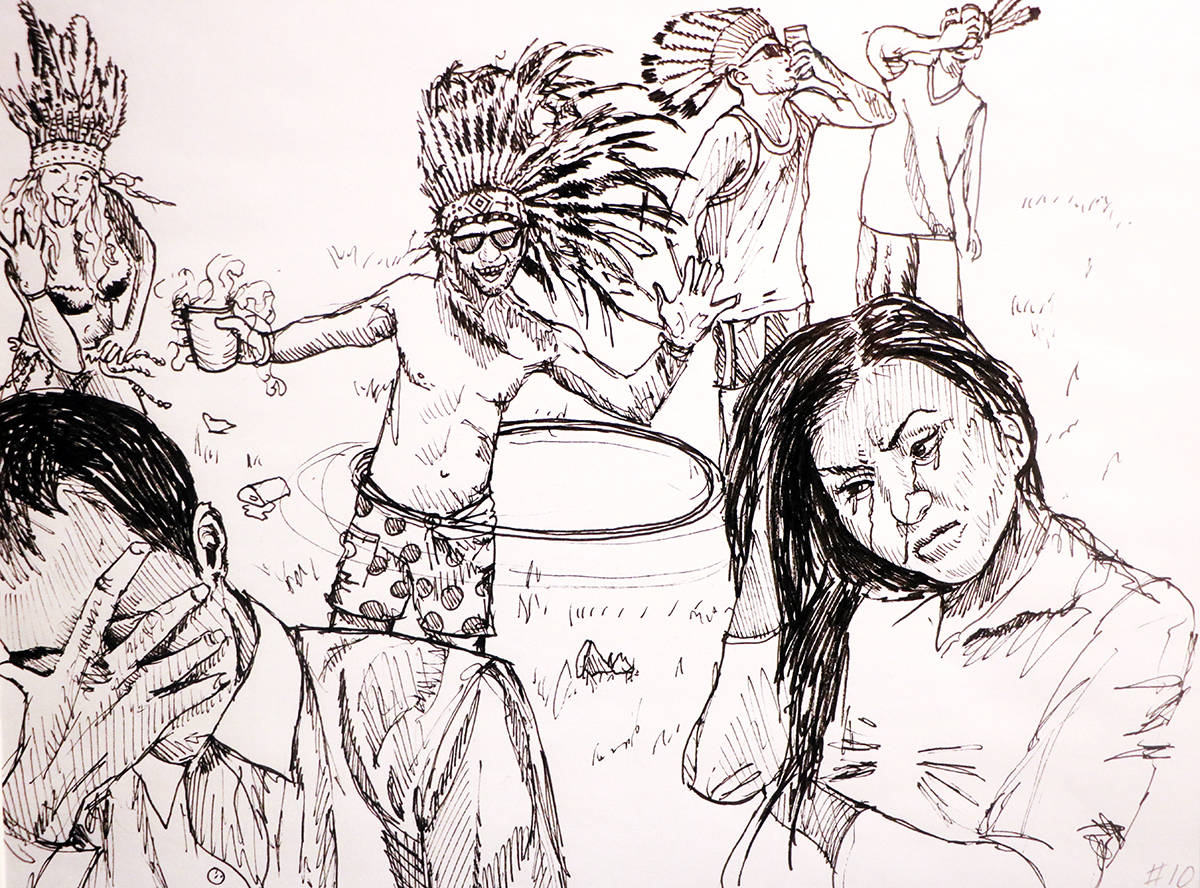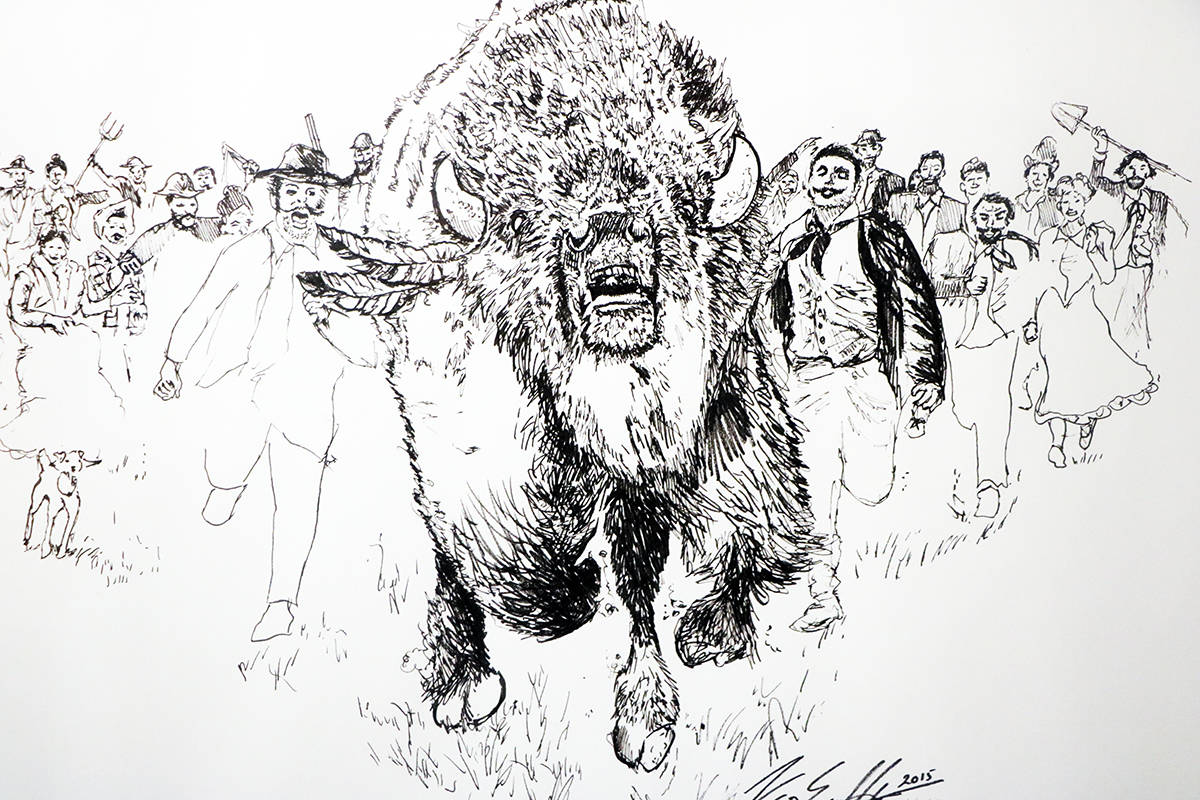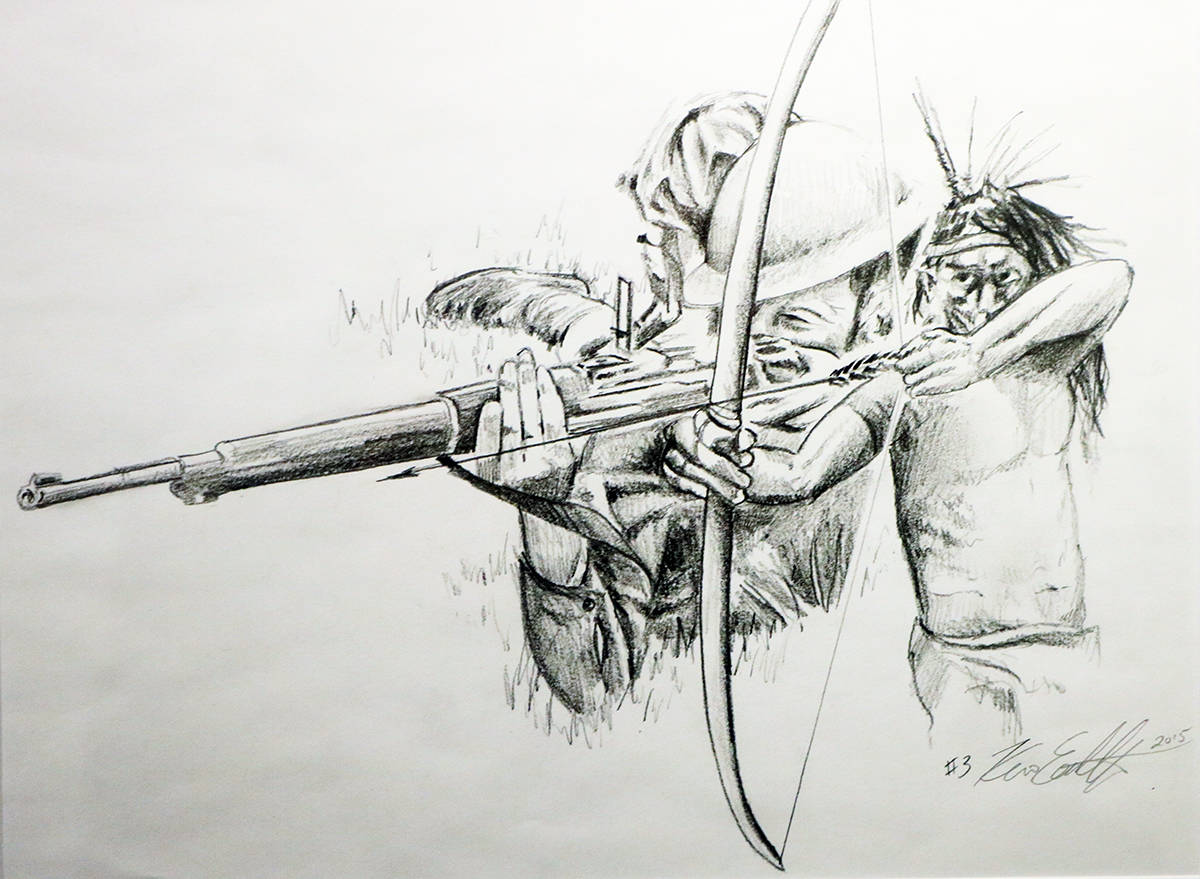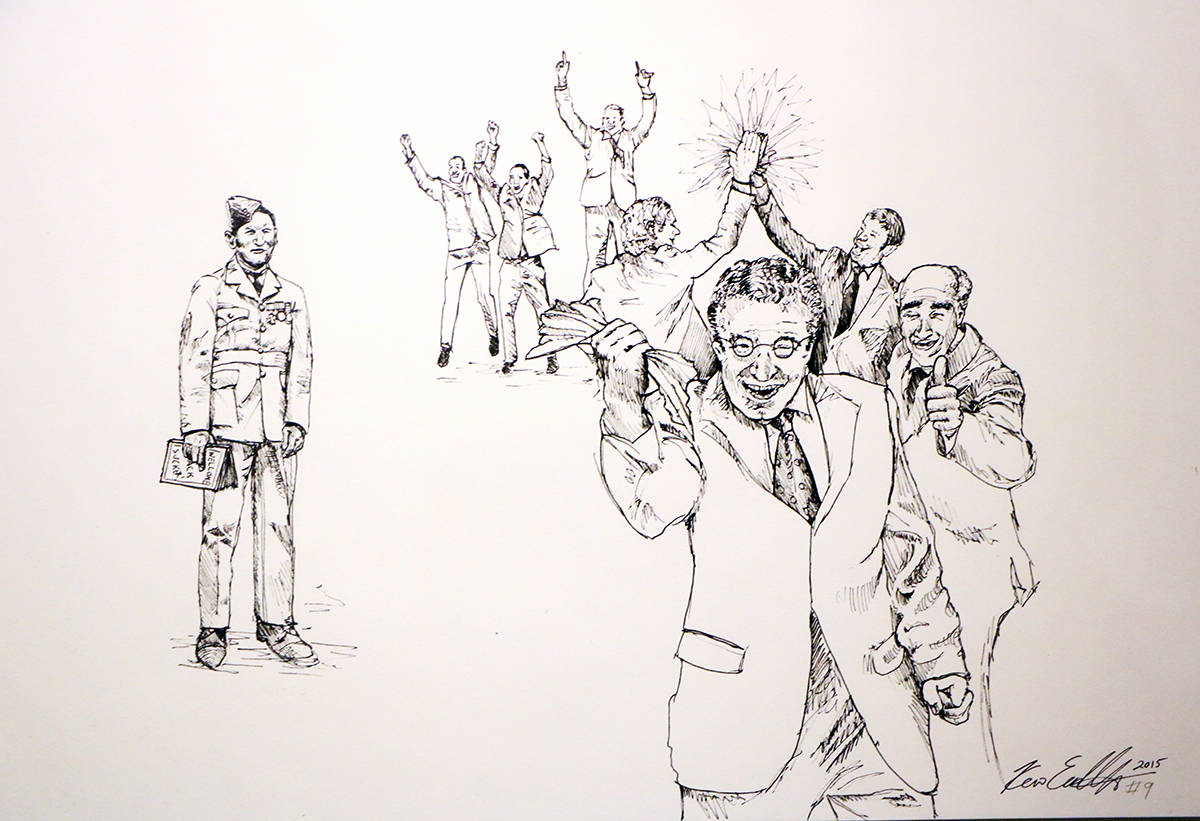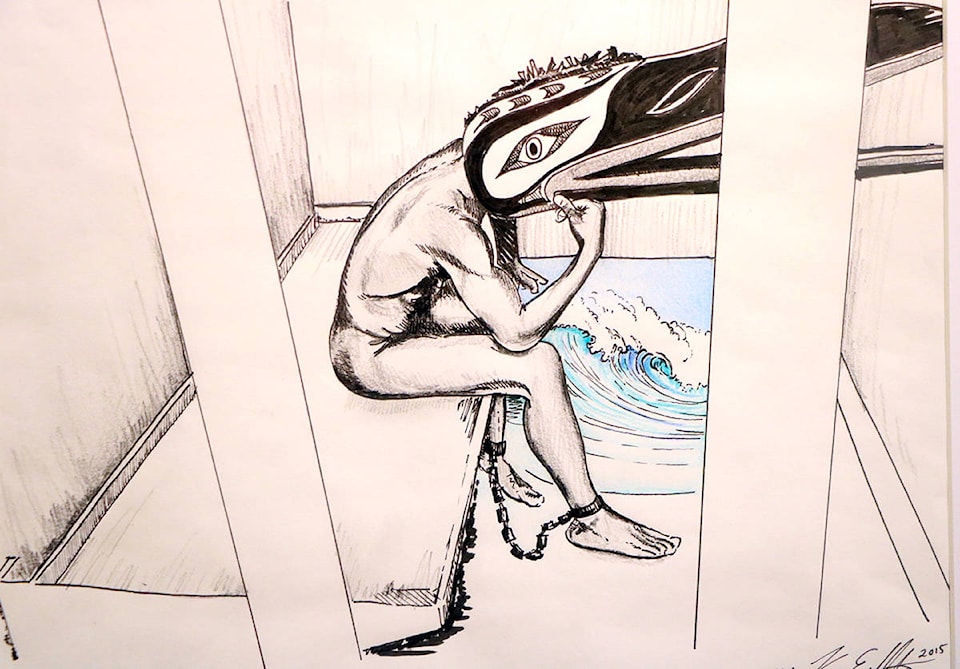In the Upper Gallery at the Station House this month is the visceral and thought-provoking work of local artist Kevin Easthope in Lessons in Indigenous-Settler Relations.
Easthope is a lifelong resident of Williams Lake, beyond a few stints abroad, and works at the Cariboo Fire Centre when not working on his art.
Together with his wife Natalie, Easthope now also looks after his three-month-old daughter Charlotte, who makes life pretty interesting he ruefully observed.
“Now, with the new baby, my job at the fire centre and attempting to produce some artwork, put on some shows and make some work for clients it’s quite a busy lifestyle,” Easthope said.
His artwork covers a wide range of mediums, with large scale oil paintings being a primary focus alongside photorealistic graphite drawings and contemporary collages of pop culture related pieces. Recently Easthope has been focused more on graphic design gigs to help pay the bills but is looking to do more personal works again moving forward.
“I find it very relaxing, almost like a form of meditation where you can just sort of chip away at a very realistic and challenging drawing. Rather than just sit there and meditate or do yoga, I like to do my meditation through doing that repetitive process of trying to make something beautiful,” Easthope said.
Together with Williams Lake Indian Band Chief Willie Sellars, Easthope has also illustrated the popular children’s books Dipnetting with Dad and Hockey With Dad. His work on display this month, however, is significantly more adult-oriented in nature.
Read More: Dipnetting with Dad nets crowd
“This is the first show that I’ve had in quite a few years and it’s not new work, it’s work I produced in 2015 that was inspired by a First Nations history course I took at Vancouver Island University,” Easthope said. “There were all of these issues and challenges First Nations had been facing that I was completely unaware of, so I was inspired to do this project for a university class just to make these historical events a little easier for people to engage with.”
Lessons in Indigenous-Settler Relations is something of the untold and overshadowed history of the relationship First Nations People and the settlers of Canada have had throughout the years. Rather than focus on the time of the Treaties, however, Easthope instead chose to base his works from 1867 onwards with each piece in the gallery representing major events of each decade.
He believes it’s important for people to know this history, however unpleasant it may be, and chose to do this show due to the lack of First Nations historical education that still occurs in many schools to this day. Easthope does not claim to be an expert on the subject by any means but rather as a messenger providing people with a call to learn more about Canadian history both good and bad.
To this end, Easthope chose to go for a very stark and minimalistic style for the majority of the pieces that make up Lessons in Indigenous-Settler Relations. Using primarily black ink markers Easthope employed the artistic techniques of cross-hatching and pointillism to draw as much as he could using the bare minimum.
“At least with this show I tried to represent a figure, in some cases minimalistic as possible and explore what’s the least amount of line I can put on the page to really represent movement of a figure, correct proportions and really have it feel like there’s lots of action and dynamic movement with the people on the page,” Easthope explained.
This style serves the subjects of his work well with a kind of brutal simplicity and stark visual style. Whether it be a piece designed like an old political cartoon showing the disenfranchisement of First Nations veterans, the cultural appropriation practised by some youth or a man imprisoned for refusing to give up his cultural mask, each piece tells its own compelling story.
The various events, themes and subjects were chosen to cover the most ground possible by Easthope and each piece has an explanation of the historical event being represented beside the frame. This allows for both discussion and later investigation for the viewer if they so choose.
“I hope that people come away with a sense of shock and disbelief and to be inspired to do their own research on First Nations-Canadian historical events,” Easthope said. “I think the people of Williams Lake should come out to this show because some of these pieces are really relevant to what is happening in Canada right now. It’s important to have a bit of a background on some of these factual events and I’ve presented an opportunity to engage in that information in a really easy way.”
Read More: Station House building turns 100 this year
Easthope added that he felt honoured and privileged to be a part of the showings at the Station House Gallery this year, on the building’s 100 year anniversary. He feels it’s one of the only places in town where visual artists can congregate and share their work.
Kevin concluded by offering a big thank you to his wife Natalie, whose support and organization skills made this show possible.
Lessons in Indigenous Settler Relations is available, for free, to the public for the rest of the month of February.
patrick.davies@wltribune.com
Like us on Facebook and follow us on Twitter
